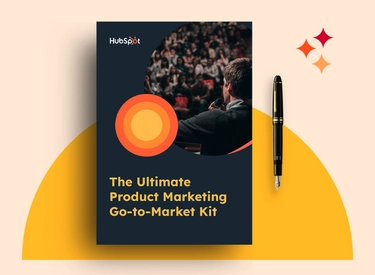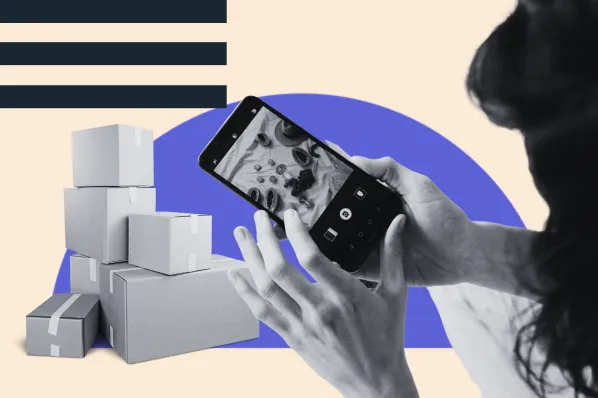Product classification is key to uncovering the reasons behind your consumers' buying behaviors.

For example, I've been buying the same toothpaste for years. I don't think about testing out a different brand or buying from another retailer. Toothpaste, as it turns out, is a "convenience good." Shoppers like me usually buy this product without putting too much thought into it.
Understanding product classifications like this can help you better market, price, and distribute your products.
There are four types of product classification and a variety of reasons why these classifications are important. Let's dive into each type, so you can decide where your product falls, and learn the top marketing strategies for each.

Free Product Go-to-Market Kit
Free templates to ensure that your whole team is aligned for your next product launch.
- Product Launch Template
- Product Roadmap Template
- Sales Plan Template
- And more!
Download Free
All fields are required.

Continue reading, or jump to the section you’re looking for:
- What is product classification?
- Product Classification in Marketing
- What are the four classifications of products?
- Why the Classification of Consumer Products Is Important
- Product Classification Examples
What is product classification?
Product classification organizes products into four categories based mostly on consumer buying behavior, similarity to competing brands, and price range. Classifying products helps marketing and sales teams develop strategies to target consumer needs.
Product classifications are not the same as product categories. Both can help to organize products for promotion. But product categories are usually specific to a business, industry, or niche.
Product Classification in Marketing
Understanding product classification is vital when devising a marketing strategy. Why? Well, it lets you know the mindset most consumers have and the behavior they display when interacting with your product.
This knowledge helps you create effective customer-centric marketing strategies. It also helps you decide on a realistic marketing budget.
For instance, say your products fall under the "unsought goods" classification. This means that you’ll likely need to take a more aggressive marketing approach to reach consumers that may not have considered your product or brand.
Think of charity organizations, life insurance companies, and funeral homes. These are usually not top of mind for consumers. As such, these brands must put in more effort to be visible to consumers and highlight the benefits of their goods or services.

Shopping goods, on the other hand, are highly visible and competitive. Consumers typically spend time comparing quality, cost, and value before making a purchase. That’s why building brand loyalty is vital for this product classification.

As you can see, there are factors to consider for every classification of product. The more familiar you are with consumer habits and beliefs for that category, the more equipped you will be to market your product.
What are the four classifications of products?
- Convenience Goods
- Shopping Goods
- Specialty Goods
- Unsought Goods
There are four types of products and each is classified based on consumer habits, price, and product characteristics: convenience goods, shopping goods, specialty products, and unsought goods.
Let's dive into each one in more detail.
1. Convenience Goods
Convenience goods are products that consumers buy repeatedly without much thought.
Once consumers choose their brand of choice, they typically stick to it unless they see a reason to switch. For example, an interesting advertisement or convenient placement at the checkout aisle may inspire them to try a new brand.
Examples of convenience goods include:
- Gum
- Toilet paper
- Soap
- Toothpaste
- Shampoo
- Milk
Marketing Convenience Goods
To promote a convenience good, remember that most people impulse buy these products. Placing your products near the checkout line at a store could be a good idea for these products. That's why you'll often find candy and gum at the front of a store.
Most convenience products have low prices. This means that cost and discounting aren't major deciding factors when considering a purchase. I won't switch my toilet paper brand just to save a few cents.
For convenience goods, brand recognition is key. With this in mind, you'll want to create widespread campaigns to spread awareness of your company if possible.
For instance, Charmin, the toilet paper brand, is a widely recognized brand in the United States. This is partly due to the company's consistent and long-term advertising strategy, dating back to the 1960s with the invention of the character "Mr. Whipple" who appeared in TV, print, and radio ads.
2. Shopping Goods
Shopping goods are products shoppers typically spend more time researching and comparing before they buy. Unlike convenience goods, these are rarely impulse purchases.
Shopping goods can be affordable items, like clothes and home decor. For example, if you have an event coming up and you want to get a nice pair of shoes, this doesn’t fall under impulse purchases. Instead, you'll want to try it on, consider whether the price is worth it, and even get input from your loved ones.
Shopping goods can also be a one-off purchase with a higher economic impact. These are higher-end goods like cars and houses.
Since it's an expensive and important purchase, you'll spend a good amount of time deliberating on it. For example, when buying a house you'll attend different open houses, and compare the pros and cons of your final selection.
Marketing Shopping Goods
To promote a shopping good, invest in content that persuades your buyer of your product’s value. It's important your marketing materials show how your product differs from the competition and the unique value it offers. This commercial for Honda is a great example of shopping goods marketing:
Price also plays a role in this product type. This means that the promotion of discounts and sales can attract consumers to your brand.
3. Specialty Goods
A specialty good is the only product of its kind on the market. This means consumers don't usually feel the need to compare and deliberate as much as they would with shopping products.
For example, iPhones are a specialty good because of Apple’s strong brand identity, unique features, and operating system. This combination creates a perception of product quality.
Other examples of specialty goods include luxury cars, gourmet food brands, and designer clothing.

Free Product Go-to-Market Kit
Free templates to ensure that your whole team is aligned for your next product launch.
- Product Launch Template
- Product Roadmap Template
- Sales Plan Template
- And more!
Download Free
All fields are required.

Marketing Specialty Goods
When marketing specialty brands, you may not need to convince consumers that your product is different from competitors. These are often rare purchases with high brand awareness, so consumers often covet these products.
To maintain high demand for specialty products, focus on product innovation and improvement. This keeps your customers loyal to your brand.
For instance, if Apple stopped updating their iPhones, users might think about switching brands. But updates like action mode, privacy keys, and visual lookup show shoppers that this brand continues to innovate.
4. Unsought Goods
Unsought products are goods that people aren't usually excited to buy. These products have utility, but they're usually not fun purchases. Good examples of unsought goods include fire extinguishers, insurance, and refrigerators.
People often buy unsought goods out of a sense of fear, danger, or utility. For instance, you wouldn't go online to search for the "new and best" fire extinguisher. You'd only buy one due to the fear of a potential fire. People also buy unsought goods like refrigerators or toasters because the old ones stopped working.
Marketing Unsought Goods
With unsought goods, focus on reminding consumers that your product exists and why they need it. Then, convince them that purchasing your product will leave them with a better sense of comfort or security.
Focusing on a target audience and using marketing to inform and motivate customers are also useful strategies. For example, this commercial from Samsung introduces bespoke refrigerators that buyers can personalize.
This strategy attempts to change the perception of the refrigerator from a boring necessity to an exciting purchase.
For more product marketing insights, plus free templates, download this free product marketing kit.
Why the Classification of Consumer Products Is Important
Customer Awareness
Product classifications can help you better understand what motivates people to make a purchase. That information helps your team make more effective decisions for:
- Marketing
- Pricing
- Sales
- Distribution
This knowledge can also help your team make decisions that make it easier for customers to find and use your website for online purchases.
Industry Awareness
Correct product classifications help businesses avoid unnecessary risks. They also impact pricing and distribution.
More resources:
Competitive Awareness
Product classification helps your business meet and exceed the standards set by competitors. They can help make you a more effective brand in your niche and industry.
Understanding how your product might be classified can also help you find ways to make it stand out. It can also help you weigh the value of continued innovation, research, and development.
Product Classification Examples
1. Browndages
Browndages is a convenience goods brand. It markets itself by highlighting its key feature: bandages for every skin tone.
Messaging like "The perfect bandage for brown skin" is on the brand’s website, packaging, and social media platforms. This makes it stand out against competitors like Band-Aid which usually focus on medical benefits.
2. State Farm Insurance
Like many insurance companies, State Farm falls under the unsought goods product classification.
As such, brand and product awareness is a priority when it comes to marketing.
In its marketing efforts, State Farm positions itself as a reliable and trustworthy partner to rely on when bad things happen in your life.
In this example, the brand starts with a broken window. It spotlights a fear many homeowners have — a popular tactic used by unsought goods brands — while mentioning why trusting this brand will make things go smoothly.
3. Energizer
For many consumers, the first thing they think of when they picture batteries is a pink rabbit holding a drumset.
Similar to Charmin, Energizer created a brand mascot that consumers could easily recognize and remember: the Energizer Bunny.

As a convenience good, Energizer needed to increase its brand recognition so that it could stand out among competitors in the store.
Now, the brand is widely popular and this is likely due to this marketing tactic.
4. Oui The People
For products under the "shopping goods" classification, it’s imperative that you find ways to stand out among your competitors.
Why? Because, when shopping for these products, consumers compare everything: features, cost, value. As such, you must offer something that other brands don’t - whether that relates to your product features, brand values, or mission.
For Oui The People, sustainability is at the center of its brand.

Consumers who care about the environment will gravitate toward the brand because of its use of recyclable material for its products and packaging.
5. Pyer Moss
As mentioned before, when people purchase specialty products, they usually understand their quality and value.
What consumers are looking for instead is a brand identity they can relate to, a vision they identify with.

Luxury clothing company Pyer Moss attracts consumers with its refreshing take on fashion. The brand isn’t afraid to step outside of the norm while still remaining rooted in its heritage.
Make Product Classification Work for You
Now that you know where your product fits, use consumers' buyer behavior to inspire your next marketing campaign. It’s time to figure out how you can meet — and exceed — customers' expectations of your product.
Editor's Note: This blog post was originally published in August 2020, but has been updated for comprehensiveness.

Free Product Go-to-Market Kit
Free templates to ensure that your whole team is aligned for your next product launch.
- Product Launch Template
- Product Roadmap Template
- Sales Plan Template
- And more!
Download Free
All fields are required.






![The 6 Stages of the Product Life Cycle [+Examples]](https://www.hubspot.com/hubfs/product-life-cycle_0.webp)




